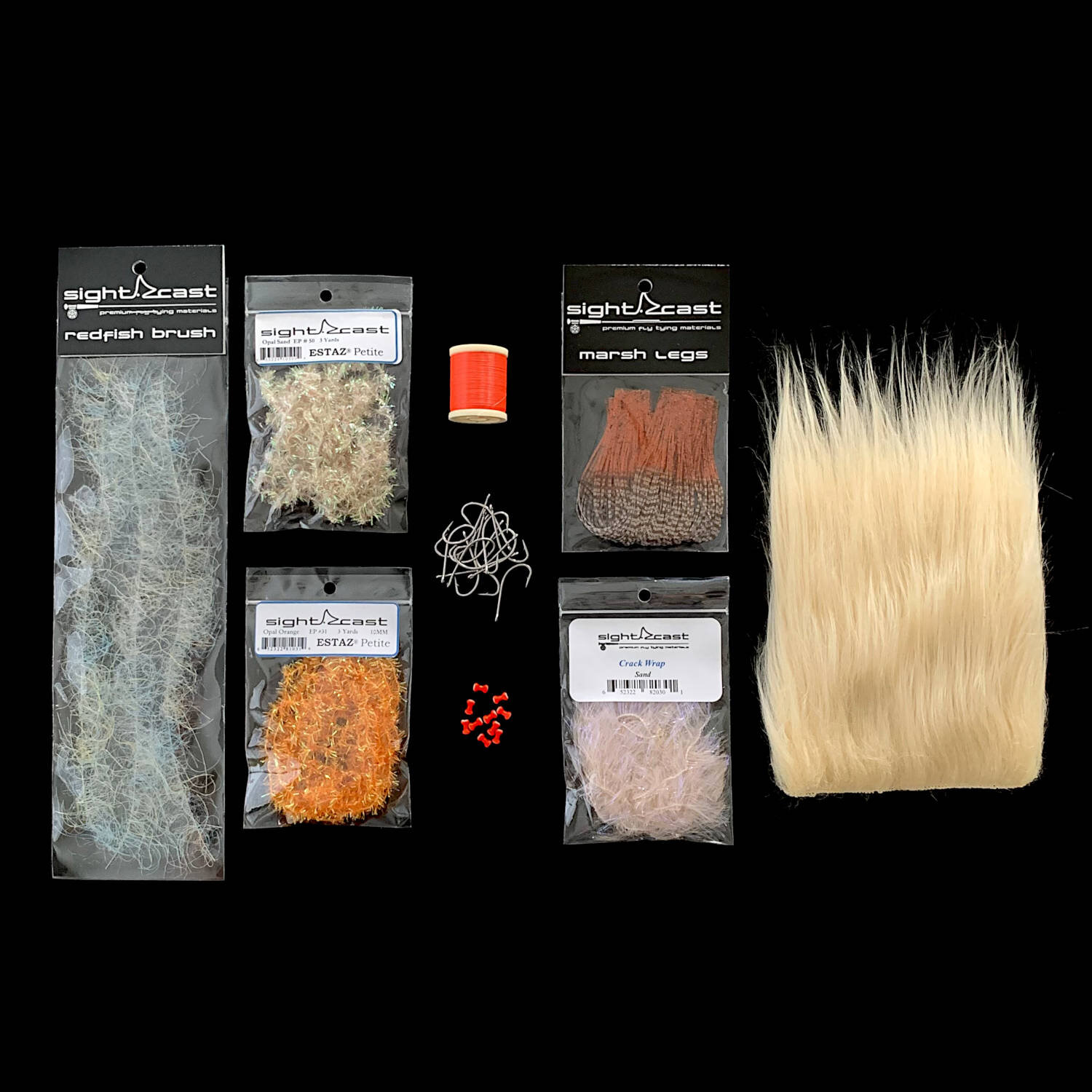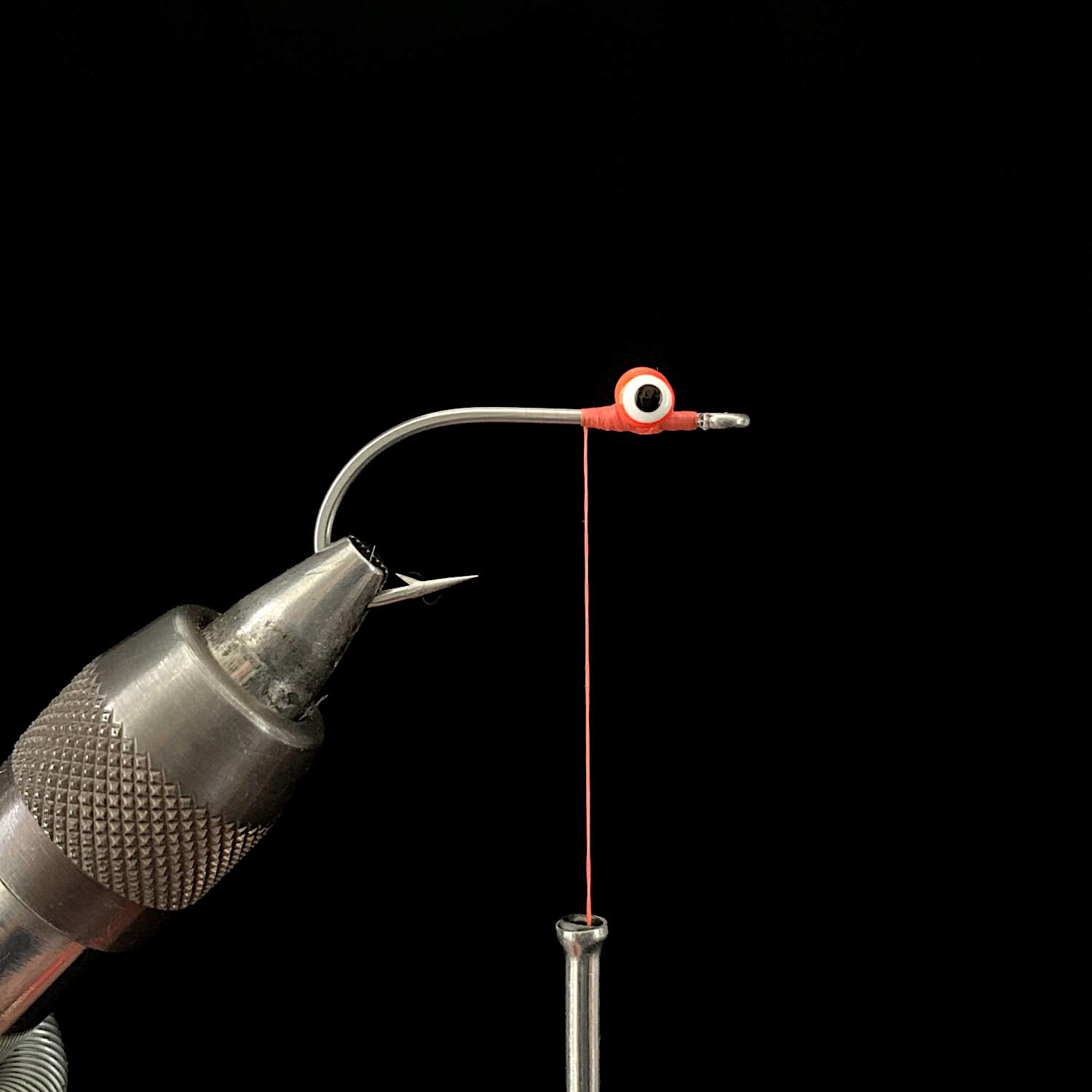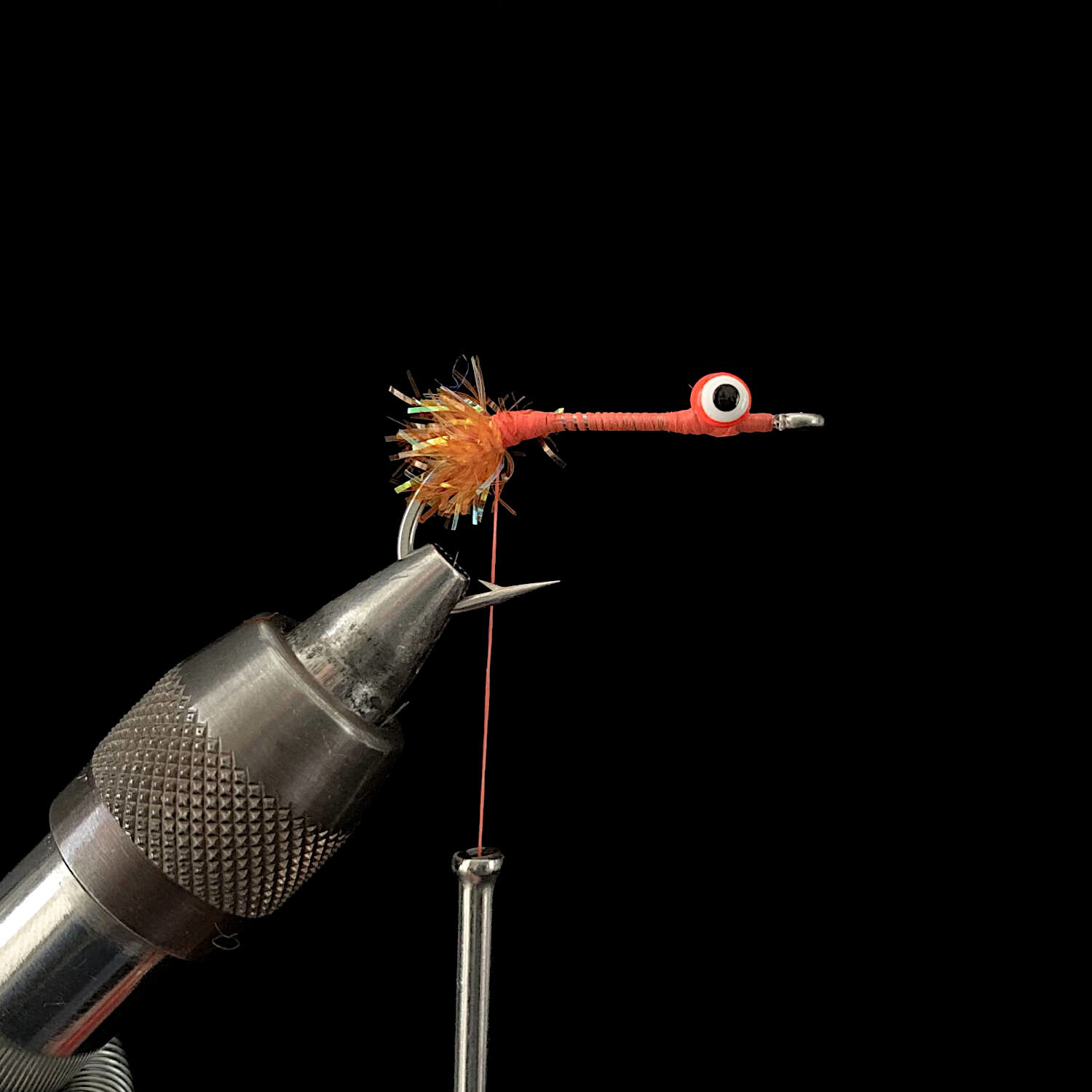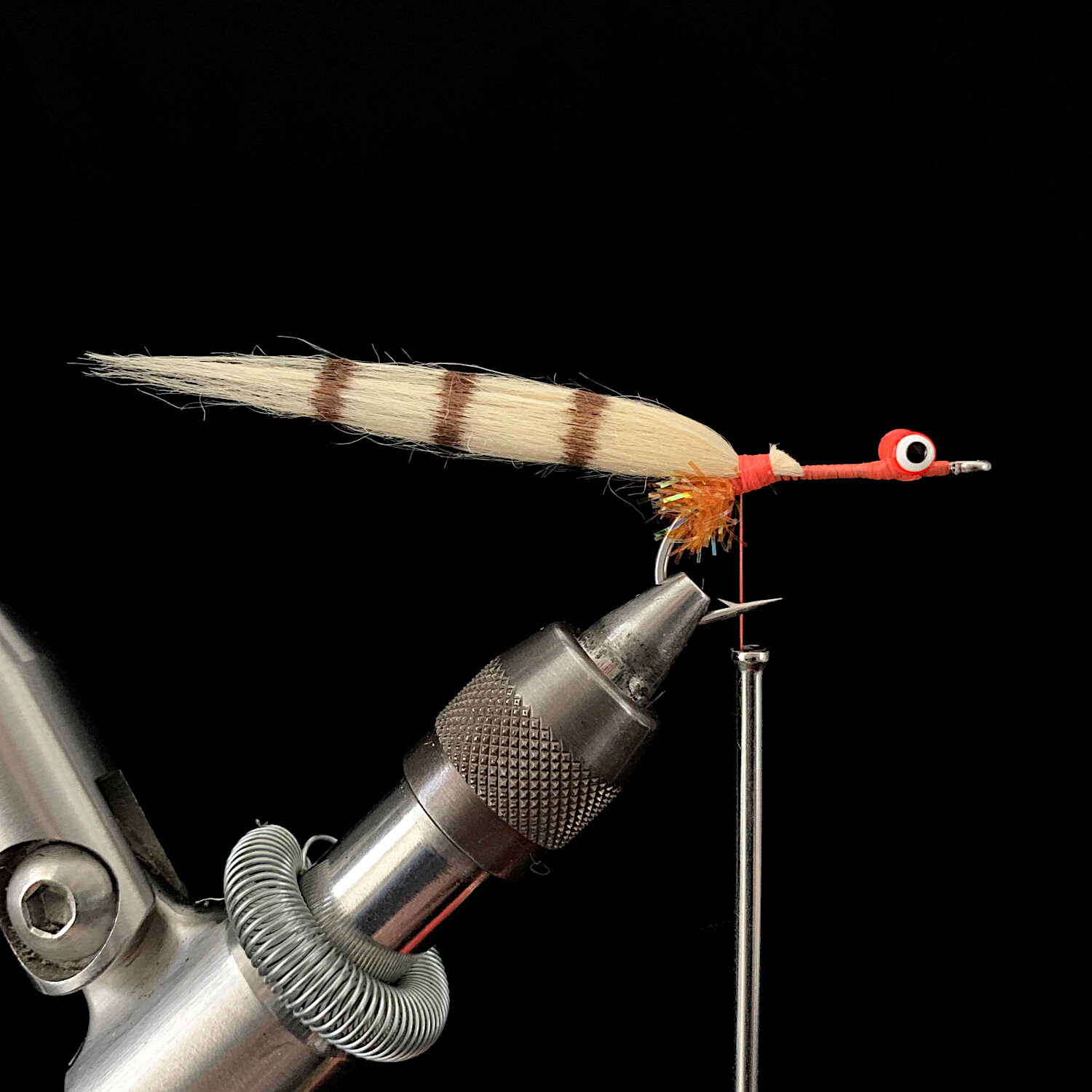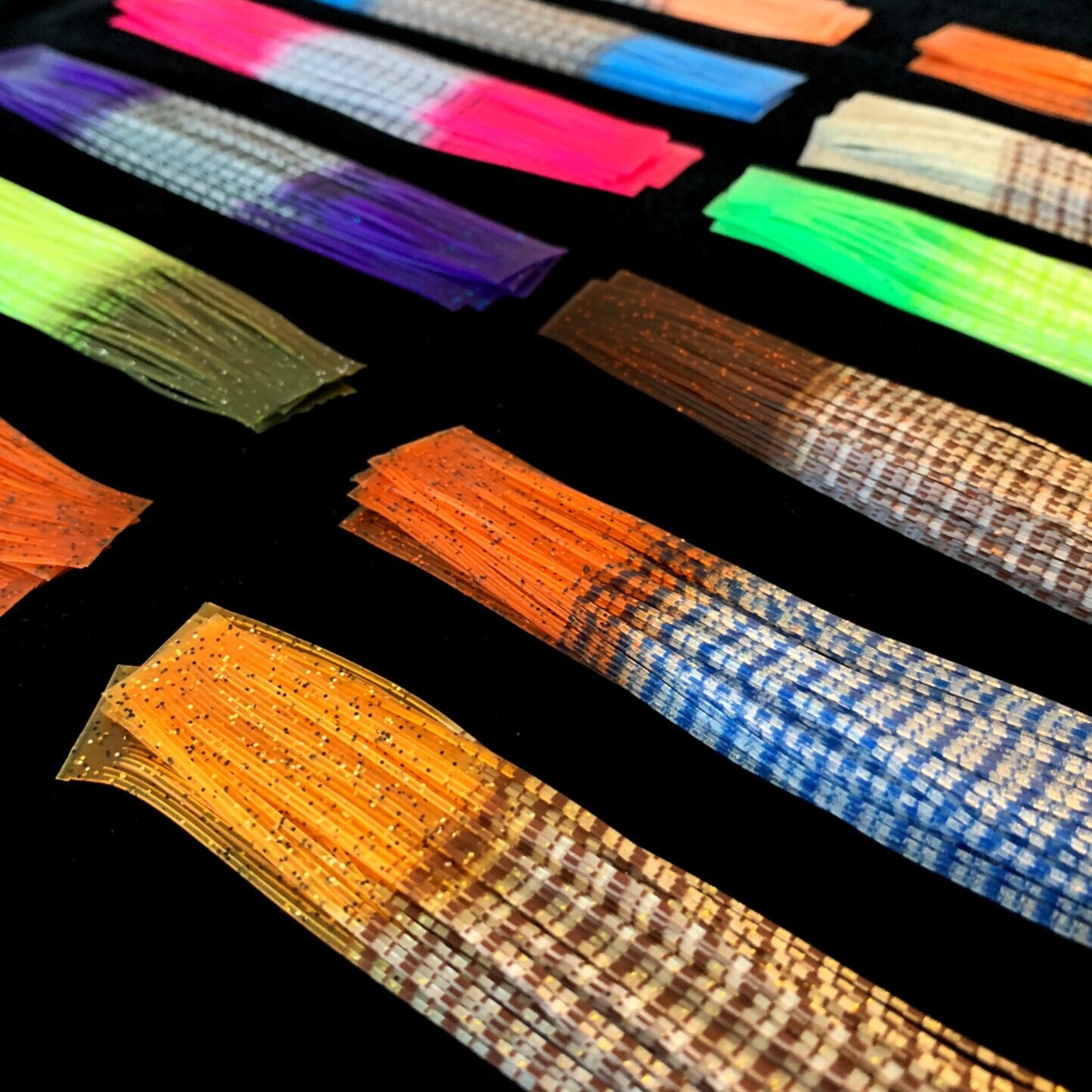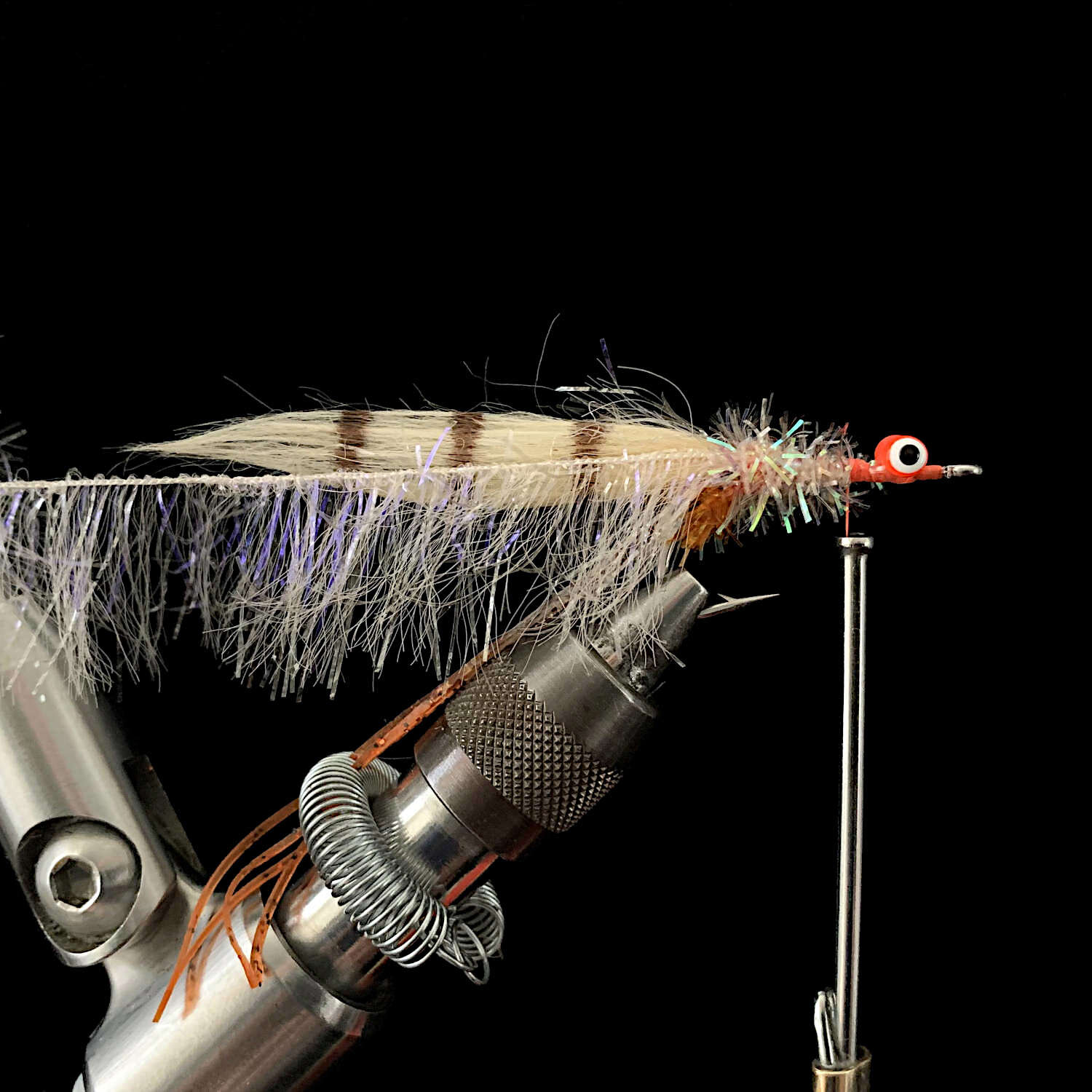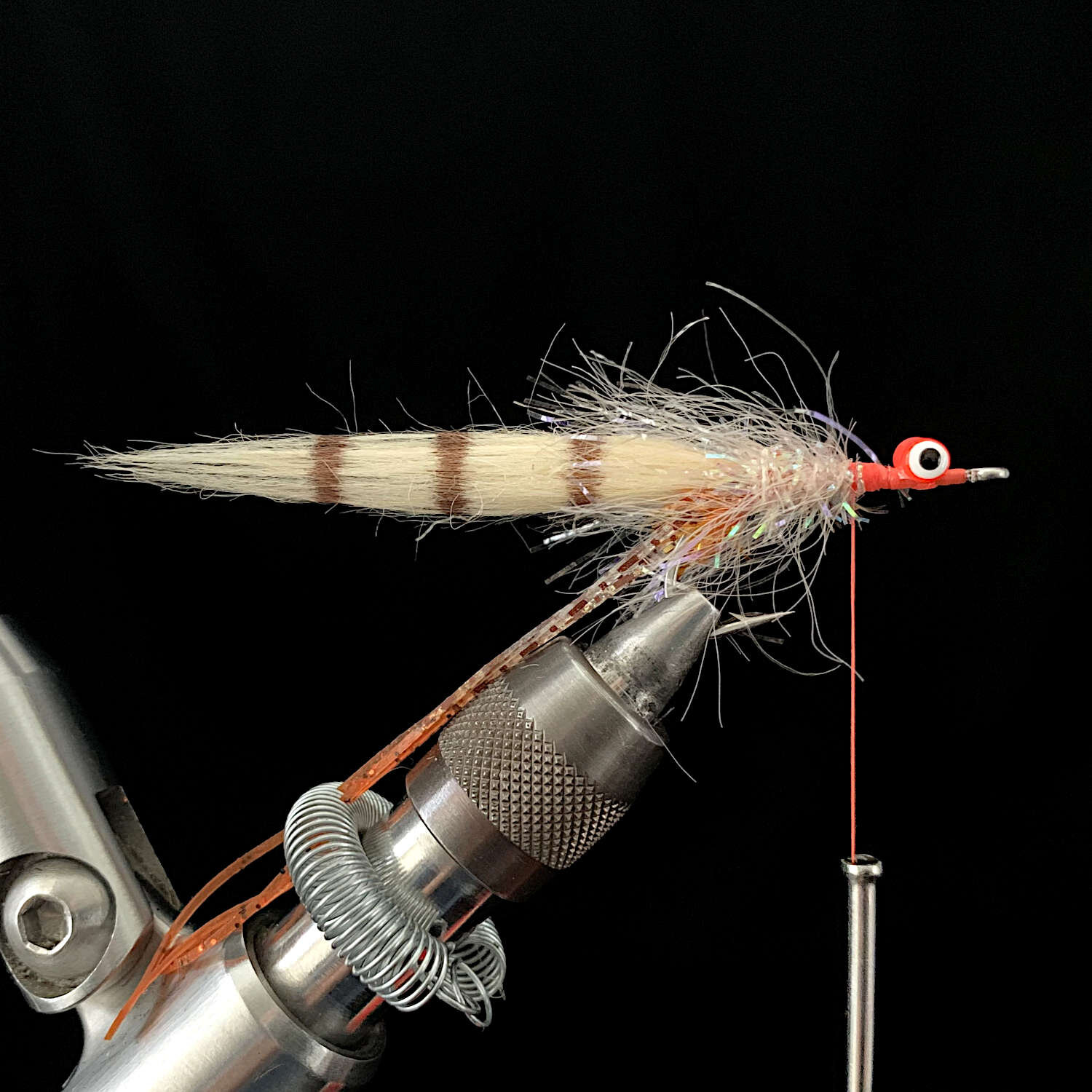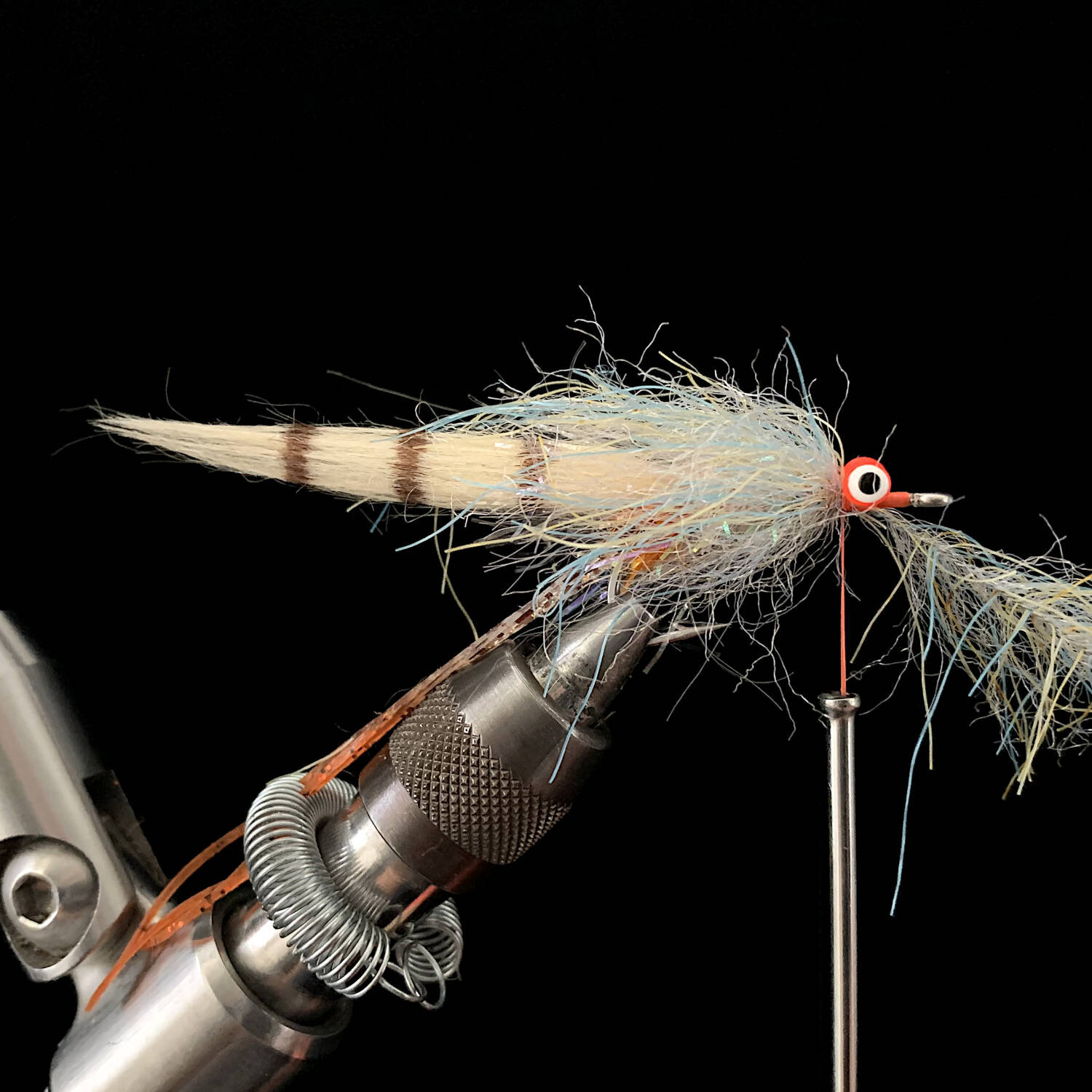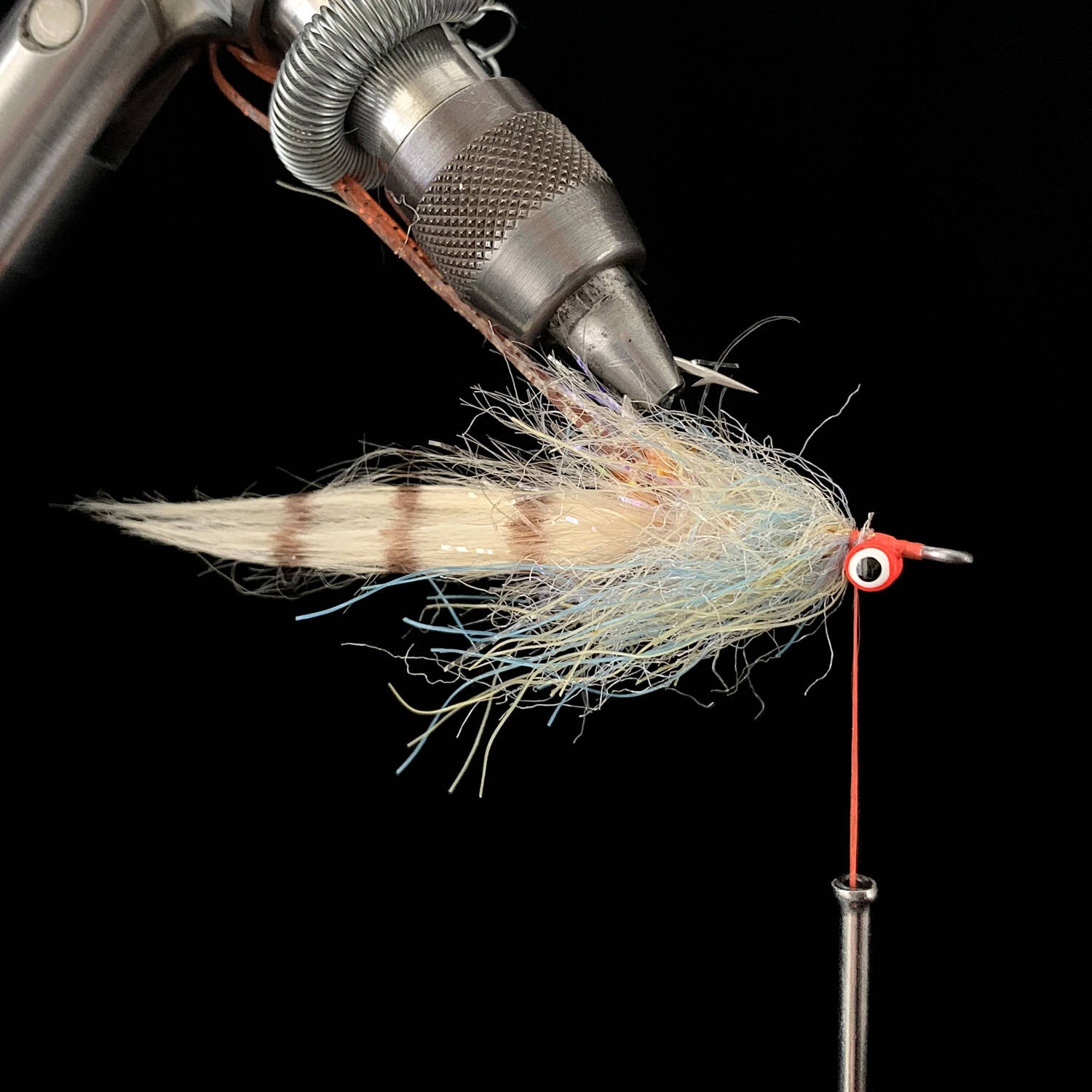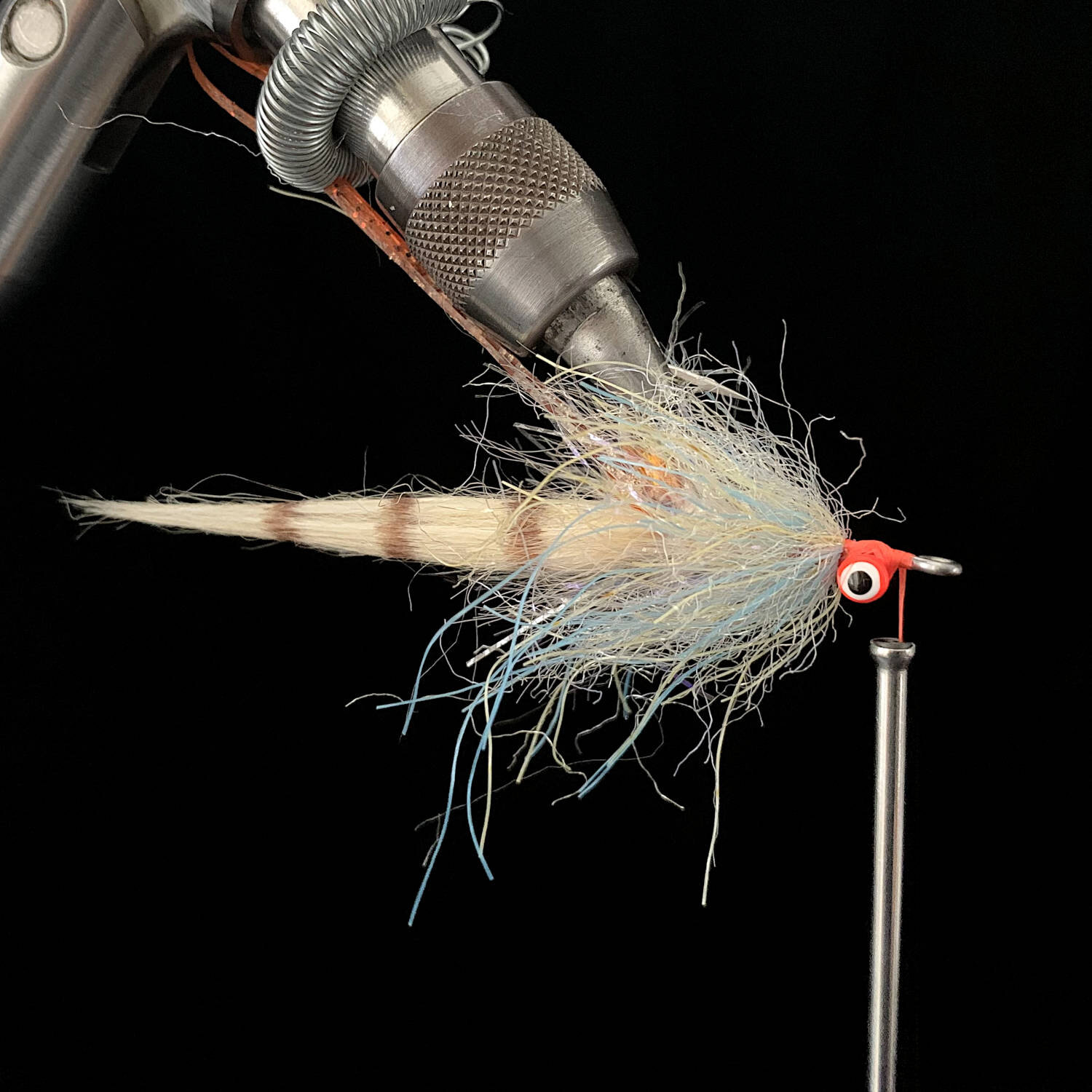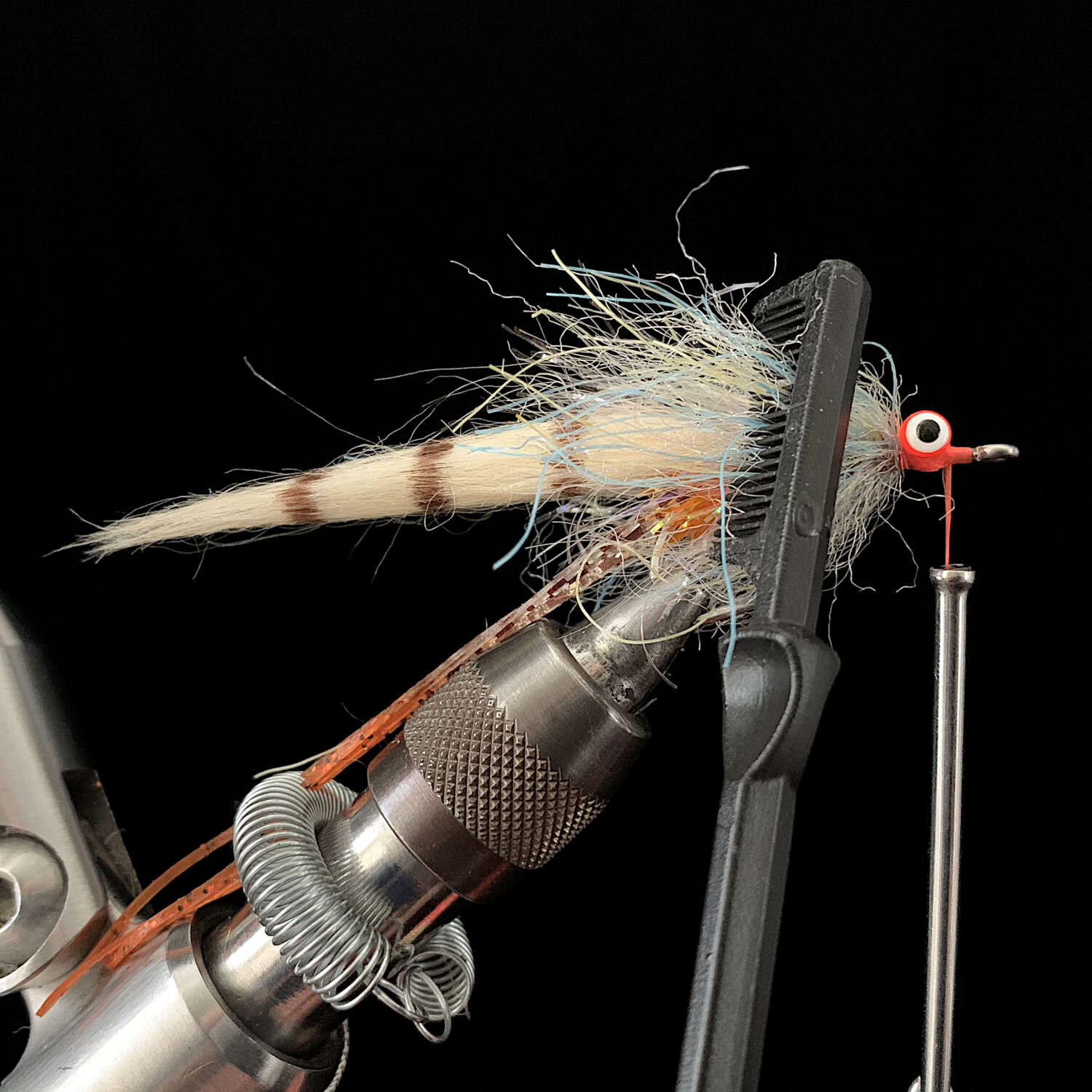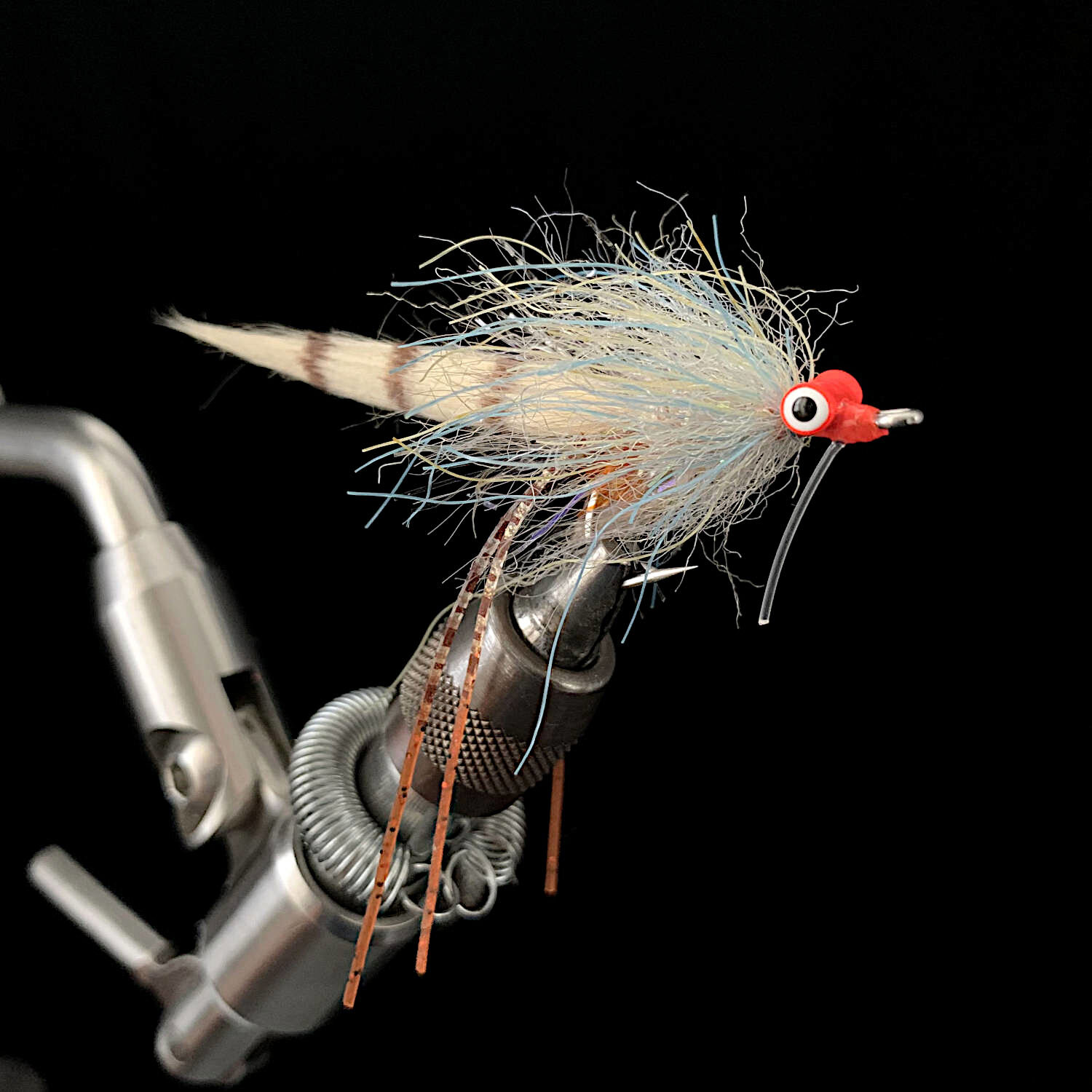How To: Tying the Redfish Cracklin Fly
The Redfish Crack Fly
The Redfish Crack fly has been a staple pattern in the Texas and Louisiana Gulf Coast fisheries for many years. The fly just looks like something that needs to be eaten and although designed for Redfish, it has caught just about every inshore saltwater species there is. It was first developed in Houston, Texas by Fishing Tackle Unlimited’s fly fishing manager, Andy Packmore, and then brought to the masses by Port O’Connor fishing guide, Capt. Scott Null.
The original pattern consisted of just a few materials including a tan Craft Fur tail, orange Cactus Chenille body, olive EP Streamer Brush head, and complete with some beadchain or small lead eyes. The brush at the head of this fly is key for pushing lots of water and creating a presence that demands attention. The Cactus Chenille body creates a hot spot for fish to key in on, but more importantly it allows the brush to lay down flat and streamlined when the fly is being retrieved. Then when the retrieve is paused the brush will flare out and the combination produces an awesome pulsating movement that fish cannot resist. Add in the long flowing Craft Fur tail and you have all the necessary components of a deadly fly that you can tie on with utmost confidence.
The Redfish Crack fly has taken on more of a “style” of fly rather than sticking to an exact recipe. It has evolved and has led to many variations. The Redfish Cracklin is one such variant, which captures all the key components of what originally made this fly successful, and then adds additional movement in the form of silicone legs and a super-buggy brush head.
This fly tying tutorial will cover the recipe and the step-by-step process of tying the Redfish Cracklin in the Blue Crab color scheme.
FLY TYING MATERIALS
(scroll down to the bottom to see the color list for six effective color combinations)
Hot Spot: Estaz Petite
Tail Material: Super Fly Fur
Legs: Marsh Legs
Body 1: Crack Wrap
Body 2: Estaz Petite
Head: Redfish Brush
Weedguard: Mason Hard Mono 30#
Thread: SCFC Flat Waxed Nylon
Hook: Size 2 - Daiichi 2546 or Ahrex SA210.
HOW TO TIE A REDFISH CRACK FLY
Step 2:
Wrap your thread to the bend of the hook and secure a piece of Estaz Petite. Wrap approximately 3-4 times. When finished, the Estaz Petite should be level with the top of the hook shank.
This is commonly called a “Hot Spot” or “Egg Sack”. It provides a pop of color and helps keep the tail material propped up to avoid fouling.
Step 3:
Tie in a small piece of Super Fly Fur just in front of the Hot Spot.
The tail length should be approximately 2” in length.
Using a brown permanent marker, bar the tail by adding 3 vertical lines spaced about 1/2” apart from each other.
Step 4:
Tie in two Marsh Legs. Spread the legs to both sides of the fly. Half on the left side, and half on the right side.
Note the position of the thread as it hangs from the bobbin. After tying in the legs, the thread should be in line with the barb of the hook, or close to it. This is a good measurement of the tie in location for the next step.
Silicone legs designed specifically for saltwater fly patterns and are the perfect way to add movement, color, and dimension to all your shrimp, crab, baitfish, and crustacean flies.
Step 5:
Tie in a piece of Crack Wrap and then set to the side.
Step 6:
Next, tie in some Estaz Petite at the same location.
The Crack Wrap will be palmered over the top of the Estaz so it is ideal to have them share the same colors.
Step 7:
Wrap the Estaz Petite with very close touching wraps towards the eyes.
Leave about 1/4” of space behind the eyes to make room for the head of the fly.
A single-sided chenille with a stealthy thin internal cord that’s perfect for building bodies, collars, or palmering over the top of other materials.
Step 8:
Palmer the Crack Wrap over the top of the Estaz Petite and tie it off at the same location.
Allow some space between each wrap, you only need about 3 wraps to get the desired amount of flash.
Step 9:
Tie in a section of Redfish Brush and pull all the fibers back. With the fibers pointing towards the tail they are less likely to get trapped when palmering the brush forward.
Dress up your own Redfish Crack flies with a custom brush made from fibers, flash, and micro legs twisted together with stainless steel wire.
Step 10:
Carefully wrap the brush forward and be sure to continue pulling the fibers back between each wrap.
Wrap approximately 4 times with the last wrap up close against the eyes.
Part the fibers on the brush and secure directly behind the eyes with about 4 wraps of thread.
Step 11:
Invert the fly in the vise and cut the wire under the eyes leaving about 1/8” of the wire exposed.
Strip and remove all the fibers on the 1/8” of exposed wire and then fold the wire forward and cover with thread.
Step 12:
Clean up the head of the fly and cover all the exposed wire and fibers with thread.
Step 13:
Using a small comb or bodkin, pluck out any trapped fibers.
Step 14:
Tie in a piece of 30# Mason Hard Type Monofilament for the weedguard.
Finished:
Complete the fly by trimming the Marsh Legs to the same length as the tail and use some Solarez UV Resin to cover the exposed thread wraps for added durability.
Blue Crab
Eyes: Hot Spot Lead Eyes (X-Small) - Orange
Hot Spot: Estaz Petite - Orange
Tail Material: Super Fly Fur - Cream
Legs: Marsh Legs - Gold/Brown - Orange Tip
Body 1: Crack Wrap - Sand
Body 2: Estaz Petite - Sand
Head: Redfish Brush - Blue Crab
Weedguard: Mason Hard Mono 30#
Thread: SCFC Flat Waxed Nylon - Orange
Hook: Size 2 - Daiichi 2546 or Ahrex SA210
Tan/Brown/Gold
Eyes: Hot Spot Lead Eyes (X-Small) - Yellow
Hot Spot: Estaz Petite - Rootbeer
Tail Material: Super Fly Fur - Tan
Legs: Marsh Legs - Clear/Brown - Gold Tip
Body 1: Crack Wrap - Tan
Body 2: Estaz Petite - Tan
Head: Redfish Brush - Tan/Brown
Weedguard: Mason Hard Mono 30#
Thread: SCFC Flat Waxed Nylon - Tan
Hook: Size 2 - Daiichi 2546 or Ahrex SA210
Shrimp Pink
Eyes: Hot Spot Lead Eyes (X-Small) - Shrimp Pink
Hot Spot: Estaz Petite - Fl. Pink
Tail Material: Super Fly Fur - Cream
Legs: Marsh Legs - Pearl/Brown - Shrimp Pink Tip
Body 1: Crack Wrap - Lt. Pink
Body 2: Estaz Petite - Lt. Pink
Head: Redfish Brush - Shirmp Pink
Weedguard: Mason Hard Mono 30#
Thread: SCFC Flat Waxed Nylon - Shrimp Pink
Hook: Size 2 - Daiichi 2546 or Ahrex SA210
Olive/Copper
Eyes: Hot Spot Lead Eyes (X-Small) - Chartreuse
Hot Spot: Estaz Petite - Chartreuse
Tail Material: Super Fly Fur - Sand
Legs: Marsh Legs - Pearl/Brown - Chartreuse Tip
Body 1: Crack Wrap - Olive
Body 2: Estaz Petite - Olive
Head: Redfish Brush - Olive/Copper
Weedguard: Mason Hard Mono 30#
Thread: SCFC Flat Waxed Nylon - Olive
Hook: Size 2 - Daiichi 2546 or Ahrex SA210
Purple/Black/Pink
Eyes: Hot Spot Lead Eyes (X-Small) - Fl. Pink
Hot Spot: Estaz Petite - Fl. Pink
Tail Material: Super Fly Fur - Purple
Legs: Marsh Legs - Clear/Purple - Hot Pink Tip
Body 1: Crack Wrap - Purple
Body 2: Estaz Petite - Purple
Head: Redfish Brush - Purple/Black
Weedguard: Mason Hard Mono 30#
Thread: SCFC Flat Waxed Nylon - Purple
Hook: Size 2 - Daiichi 2546 or Ahrex SA210
Copper/Rust
Eyes: Hot Spot Lead Eyes (X-Small) - Orange
Hot Spot: Estaz Petite - Orange
Tail Material: Super Fly Fur - Tan
Legs: Marsh Legs - Copper/Brown - Orange Tip
Body 1: Crack Wrap - Tan
Body 2: Estaz Petite - Tan
Head: Redfish Brush - Copper/Rust
Weedguard: Mason Hard Mono 30#
Thread: SCFC Flat Waxed Nylon - Orange
Hook: Size 2 - Daiichi 2546 or Ahrex SA210
Sight Cast Fishing Company
We provide a line of products that are designed for those that live and breathe the shallow flats and backwater marshes. Our passion is saltwater fly fishing and we aim to provide top quality flies and fly tying materials designed for the Gulf Coast fly fisherman. Many of the materials used in this fly are available in the Tying Materials section of the website. You can also purchase this fly and many others that are already tied up and ready to fish in the Fly Shop. Good luck out there on the water!

